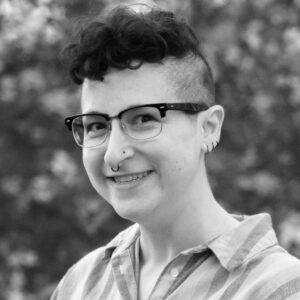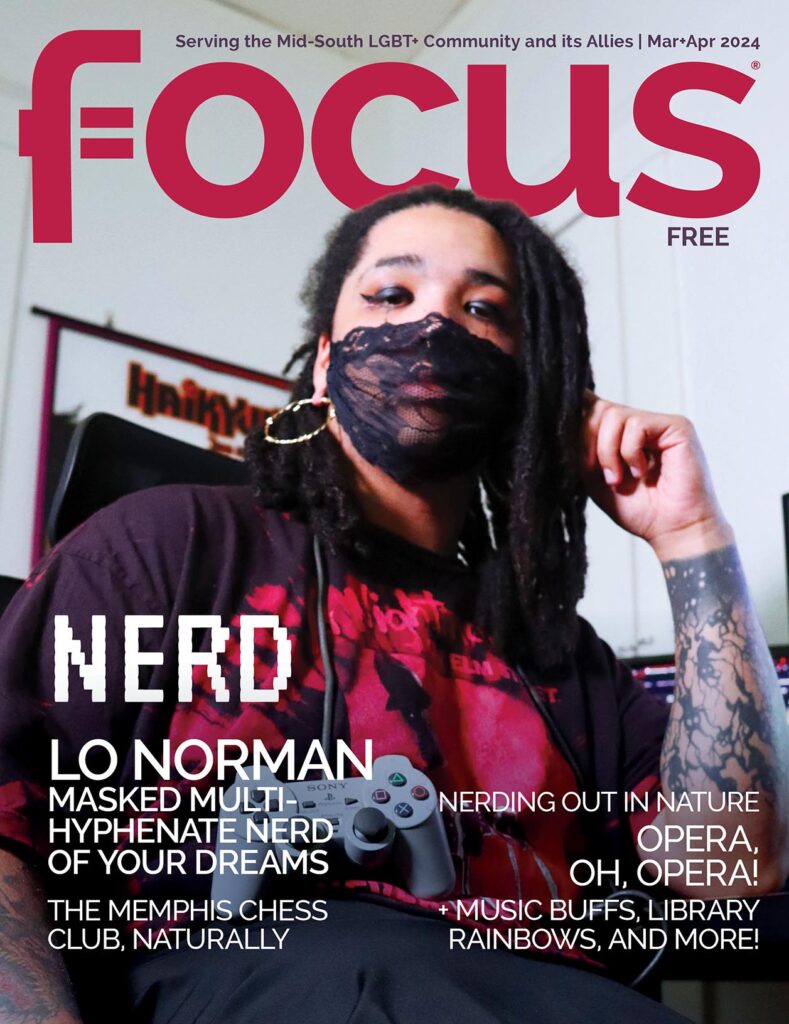by Sarah Rushakoff | photos by Jamie Harmon and Max Gersh
Focus sat down recently with friendly Memphis photographer Jamie Harmon. He’s well known to many Memphians as proprietor of the Amurica mobile portrait studio, which has plenty of weird props set in a little silver trailer. Last year, Harmon got national attention for his Quarantine Portrait project, hundreds of distanced photos of local folks through the windows and doors of their homes. Where is he now? Just trying to keep his ideas fresh and his creativity going.
What creative projects are you working on now?
I’m trying to focus on photography and documenting things. I always take lunch hours and drive around and try to take a couple of pictures I like per week. A couple of pictures that I’m like, ‘Damn, I’m so glad I was here at the right time.’
People have often said, ‘Hey, how can I buy one of those?’ I’m not interested in having a gallery represent me, take half of everything, and then the people buying it are the ones with a lot of extra income. So my friend helped me make a website, jamieharmon.com, and I’m putting prints on there for sale. I’m selling things to people who could afford like a $30 print, without the cost being as much of a deterrent.
Some people guard their tools of the trade from other people. You don’t do that. Why do you think it’s important to share info with other creatives?
I don’t think I ever thought why I shouldn’t. I never realized it was something to guard. I feel I get a lot out of sharing with people. If we all shared more about ourselves, we would realize we’re not that much different.
Now, if I have an idea I haven’t acted on at all, I might not be talking to everybody about it. Because I don’t know quite how I’m going to work it out, but I’m also not an idiot, I know someone might do it first. But once I’ve already done something and figured it out, I have no problem sharing every bit of it. I mean, most of it is just solving problems.
If you, trying to figure things out and doing your own thing, could benefit from some tips that took me six months to figure out, why would I want you to struggle through that? It’s not like you’re a threat to me, and even if you were, I would hope even better for you. I would love for you to somehow find some weird niche that would make it to the Today Show, and sell books, and make your billions.
What has been your favorite collaboration with another artist?
Collaboration for me is not necessarily that we work on the thing together. You may be working on something and I come by and visit you and, and we talk. That’s how I feel when I like when I share information with people. I’m not trying to tell you how to do it. I’m just saying, here’s the outcome that would be from my perspective. Your perspective may be totally different and both of them are perfectly fine.
You know I always pick up signs off the side of the road, and there was a Bank of America sign. Actually, the first date I ever went on with my now-wife, we went to grab that sign out of a parking lot. I had it laying in the garage for a month. A friend of mine saw it and said, ‘Well, if you turn the n upside down, it’s a u, and you’ll have Amurica. I was like, ‘That’s it.’ Life is just one big collaboration all the time. You never know who’s gonna say something that makes it fit together.
How did you come up with the idea for Amurica?
I wanted a mobile portrait scene. Something I could bring anywhere. People could get in, I could take their portrait, they get out, I can move and it’s mobile. And I had used old campers in the early 90s as a one-hour photo.
When I had accepted digital photography, I was like wait a minute, I don’t have to process anything. The images are right here. I can either email them or figure out some kind of printer system. I looked on eBay in 2010 and found this camper in just the right size. I started fixing it up with my 11 year old, we stapled up all the lights, and we stapled up all our old pictures.
I didn’t realize it was going to be something I could sell. As soon as I took a couple of pictures of people, they wanted to hire it for a party. That first year, 2011 is when it hit the road. I wanted people to be able to walk away with something, who might not have the internet, or an email. And it would look like something they would never forget. I wanted people to say, when they saw the picture, ‘Where the hell were you?’ And it worked.




